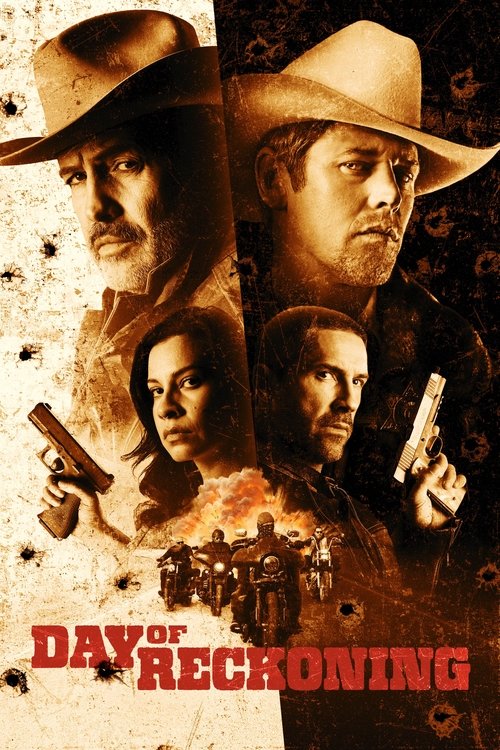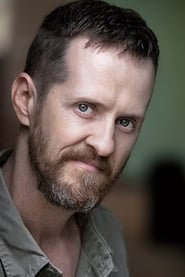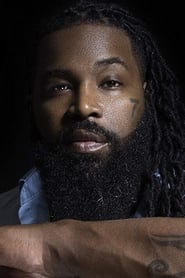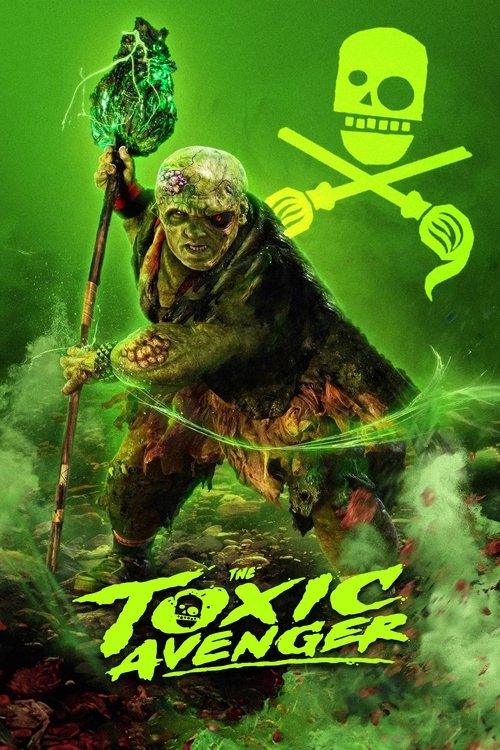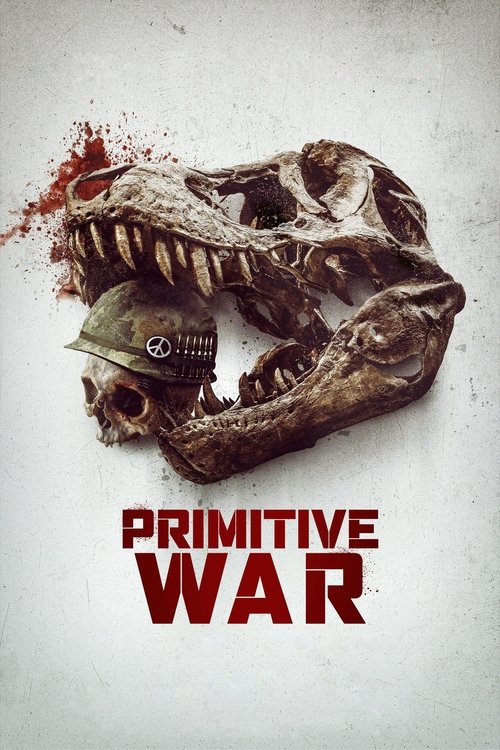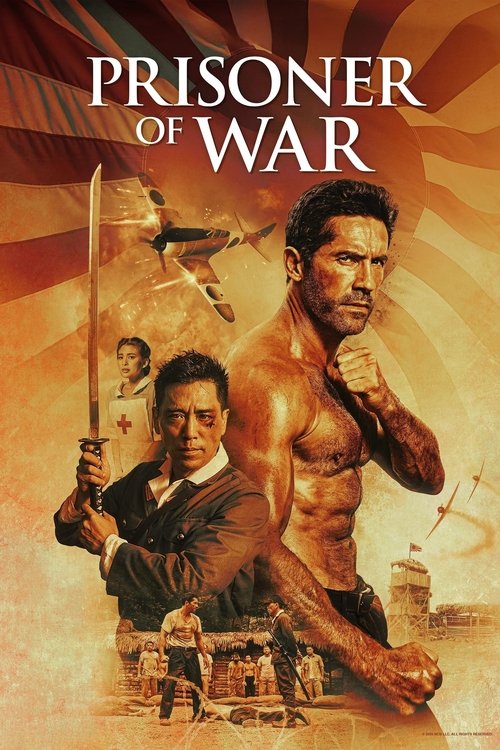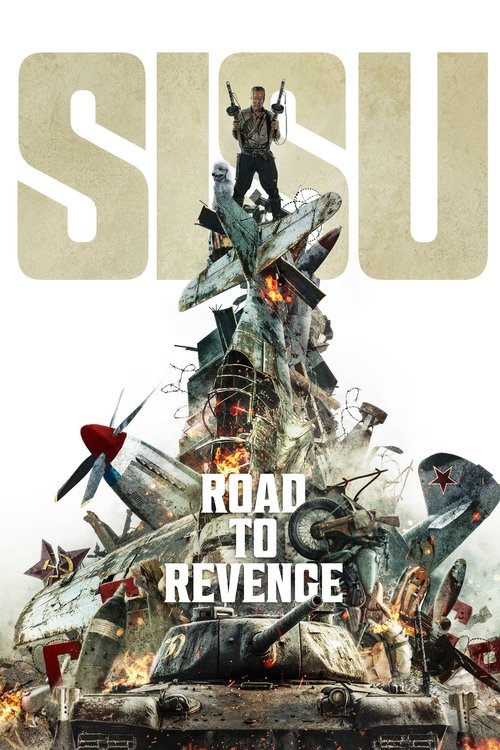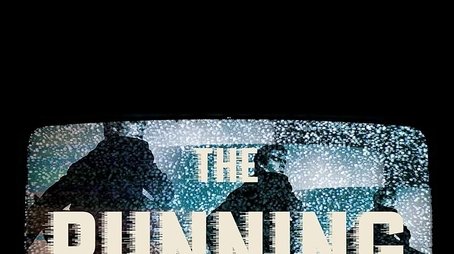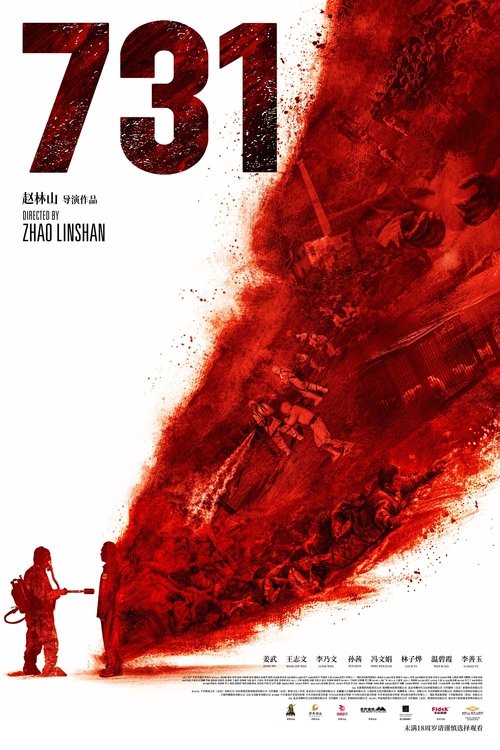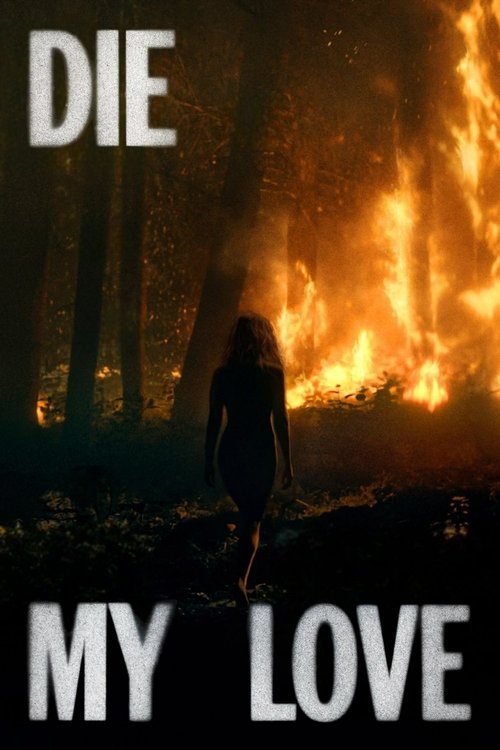
Ask Your Own Question
What is the plot?
A thin rain slicks the main street of a struggling rural town as Sheriff Trevor staggers Sarah -- the cunning woman he finally captured after a long chase -- into the back of a pickup. He moves with a mixture of relief and fatigue; the town's deputy force is depleted and treacherous, and his appointment of U.S. Marshal Salazar to assist in transporting the prisoner is meant to shore up authority. Salazar dismounts from his black Dodge and snaps the handcuffs on Sarah with the brusque efficiency of a federal officer who has seen too many courtroom drama and too much human duplicity. The three return to the town's small jail while townspeople whisper about the outlaw's notorious husband, a violent man who commands a gang rumored to be on the road and closing fast. Before they can arrange a secure transfer, legal papers, or a rendezvous with the marshal's transport, tensions flare among the posse: Trevor doubts Salazar's hardline tactics, Salazar suspects Trevor's indecision under pressure, and Sarah smiles when the two men bicker in ways that make them both lose focus.
They take Sarah to the town's clinic because she is wounded from the capture. In the hospital, an orderly named Bud tends to the prisoner and to other residents. Bud is a quiet man with a gentle appetite -- he is a vegetarian and describes this trait to a nurse as he brings water. While checking Sarah's wound, Bud is bitten at the wrist by a patient who suddenly erupts into violent thrashing; the wound is small but deep. The bite is a short, chaotic event: a patient with fevered eyes lunges during a seizure and clamps down on Bud's forearm before staff can restrain him. The bite tears skin and leaves a neat crescent of blood. Bud shouts, everyone moves, the bitten man is sedated and isolated; Trevor and Salazar debate quarantining the hospital and calling for military assistance, but they are short-staffed and the radio in the clinic is unreliable.
Within hours Bud changes. He vomits, grows restless, and then goes silent. When his skin goes waxen and his pupils dilate, the staff realize he is not dying in a conventional way. Bud rises from bed with a limp shamble, but he does not lurch to bite nurses; instead he avoids meat trays, sidesteps a chicken bone set on a table, and refuses the anxious suggestion that he taste the food. When Bud attacks at all, he does not tear at throats like the other infected patient did; he simply grabs small objects, occasionally groans, and their fellow patients remark that he hums an old hymn under his breath. Trevor and Salazar, unnerved, argue over whether Bud's strange behavior means the infection retains aspects of the host. Sarah watches closely; she sees that Bud's human habits -- his vegetarianism, his compunction around hurting people -- persist despite his new, infected state. The three men and the prisoner decide to keep Bud alive, move him with them, and find out if his condition can be studied to develop a cure or a containment method.
Outside town, tracks and muffled gunfire indicate that Sarah's husband's gang is approaching. Salazar organizes a small guarded convoy to move Sarah and the potentially valuable specimen Bud to a secure location: the radio station where the marshal has a contact and the military may be able to coordinate a pickup. The convoy is small and makes for the narrow highway in the rain with Trevor driving a sheriff cruiser, Salazar in his Dodge, and Sarah handcuffed in the rear of the pickup between Nina -- a local who has reluctantly joined the group to watch Sarah -- and Bud, whose blank eyes keep darting to the sides. As they pull away from the clinic, people on porches watch the procession pass, and the distant sound of engines signals the gang's advance. The marshal wants to set a blockade immediately; Trevor insists they must reach the radio to broadcast a warning and to request military support. They compromise: they will reach the radio station and then find an extraction point.
At the radio station the small crew bangs on doors and finally gets a DJ to pull a microphone away from a terrified technician. Salazar demands access to the emergency transmitter; the operator, shaky, retunes the tower and hands them a working feed. The marshal speaks into the mic, his voice crackling: he requests military evac, describes a contagion, and warns neighboring towns. The broadcast is short and frightened. While Marshall and sheriff plan their next move, Sarah prowls the station's perimeter and hears the low, guttural noises of infected people gathering outside. Through the cracked window she sees several figures move in jerking, predatory patterns. The station's phone lines are dead except for the ham radio, and the transmission to the outside yields only a rushed acknowledgement: military units are mobilizing but cannot respond immediately.
Trying to leave the town becomes impossible as a hurried blockade forms. Herders of panicked citizens have piled rubble across the few roads that lead out, and a swarm of infected people forms a human ring that prevents vehicular escape. Investigation by the group discovers one viable alternative on municipal maps: an abandoned missile field north of town whose concrete-sheathed silos have been sitting dormant since the facility closed. The missile complex presents one exit -- a guarded gate that is now ringed with infected -- but another route exists: vertical egress through the silos themselves. Salazar says his tactical training recommends holding ground; Trevor argues they cannot defend a largely unprepared small-town force. Sarah, silent and watchful, suggests going to the silos to see if the old ladders and shafts can provide a route out.
They leave the radio station under blackout conditions, moving through back alleys to avoid the inflamed cluster of infected that now clambers in the streets. Their group grows by necessity: Nina, who knows the town's side roads, stays, and Dr. Logan, a scientist with ties to a federal program who had been detained earlier for questioning by Salazar, appears at a checkpoint and insists he can guide them through a secure facility up at the missile complex. The group thus consists of Trevor, Salazar, Sarah, Nina, Bud now half-zombified but kept restrained, and Dr. Logan.
When they arrive at the complex, the preserved concrete and corrugated metal give no hint of the work happening beneath. The limo-sized missile doors are welded shut. They climb down narrow access hatches and enter a network of administrative rooms retrofitted to laboratories. Computers hum; a central server room whirs. Dr. Logan pulls a keycard and guides them to an inner cubicle where he has been working. He is nervous and, when threatened with a gun by Salazar and Sarah, he drops to his knees and begins shredding documents and feeding disks into a burning basket. He keeps a small office door closed and insists he had no choice: according to him, the biological program under the silo was meant to design a nonlethal agent that could temporarily paralyze enemy forces for capture without killing them. Logan explains that a variant slipped past controls and mutated into an agent that attacks neurological centers, producing reanimated hosts with aggressive, herd-like behaviors. He says the laboratory never intended to create mindless predators, only a reversible incapacitation agent. His voice cracks when he says there were intended failsafes; he says he is destroying his own name from the files because he believes that the program will be misused politically and he wants to preserve what limited evidence he can.
Trevor and Salazar have guns leveled at Logan the whole time. Sarah circles the room, listening to the scientist's half-explanations as technicians in stained lab coats shuffle into a long corridor and then are driven off by something thumping against a reinforced door. Logan's frantic shredding looks like an attempt to erase his fingerprints; he moves fast, stuffing scans into the flames. The group cannot afford to hold the lab: the sirens outside the complex wail, and the main gates would require a large force to breach. Logan insists there is a single exit from the complex, a gate surrounded by the infected; Salazar hears this and says they will breach the gate by force if they must. Sarah looks at Bud and at the wavering faces on the lab monitors. The group agrees to try the ladder egress inside the missile silos, where, Logan says, maintenance shafts run up through the complex and may lead to a less-congested exit beyond the gate.
They descend into the silos' maintenance shafts. Midway through the concrete canyon of a silo, the group hears a gurgling noise and the scrape of something across metal. A scientist who had been sheltering in a side room bolts from the shadows and screams when he sees the procession of quasi-human figures arriving at the top of the shaft. The infected attack the silo doors with a primitive, collective force. Doors tremble. Salazar readies his rifle and orders a defensive line. Logan steps ahead to check a panel and is caught before he can turn. A single infected figure, DNA ravaged and moving with a jerky, animal resilience, slips out of darkness and lashes at Logan's throat, tearing him down the steps. In a flurry of hands and blood, the scientist who has been refusing to accept culpability becomes a feed for the disease; Logan's body falls, his hat rolls into a puddle of drainage water, and the group witnesses, helplessly, how rapidly the infection consumes and transforms. Salazar and Trevor fire until the threat retreats. Logan dies in the concrete cold of that facility, felled by a single, sudden bite.
They keep descending. In the lower halls, lit by emergency lamps and by the occasional flicker of failing monitors, they find office doors tagged with government insignia and evidence of hurried evacuation: coffee cups smeared across keyboard trays, an engineering notebook with calculations smeared by what looks like a finger smeared in blood. The server room logs show erasure in progress, files being deleted by remote scripts; a faint chill of panic spreads across the group as they realize that anyone with arms-length accountability is purging records. Salazar curses and slams a fist into the server rack; the deleted logs tick into oblivion.
Eventually they reach a crossroad of corridors where the map shows four options. The group debates; fatigue frays nerves. They decide to split into pairs to search for the ladder that will take them up through the missile silos and beyond the gate. Trevor pairs with Nina and they go left. Sarah goes with Salazar and they veer to the right. Bud is strapped into a cart and pushed by a terrified technician who refuses to leave him, insisting that Bud's condition must be studied. As the pairs fan out, the claustrophobic concrete tunnels amplify every sound: a metal slab dropping, a scrape of shoe against rust, distant low moans.
Sarah and Salazar find a narrow flight of stairs that opens out into a disused maintenance hatch. It leads to a surface hatch and, beyond that, to a secondary gate that Logan had told them was less entrenched with infected. When they push up the hatch an open courtyard appears, ringed by low walls and strewn with the carcasses of vehicles burned in previous attempts to leave. The gate beyond the courtyard is wide open, but the approach is swarmed. A cluster of infected people mills at the exit, some leaning and shuffling, some boiling into short bursts of speed. Sarah steps into the courtyard and assesses the assault. Salazar signals for covering fire while they make a run for the gate. They move fast, then a squeal breaks the air; one infected lunges from the side and tackles Salazar. Sarah turns to shoot but the mass of bodies surges.
The mass attack is violent and messy. Salazar draws his sidearm and fires at the attackers, but in the crush he is grabbed from behind. A pair of infected clamp onto Salazar's arms, tearing at his chest. Blood spurts. He fights wildly, punching and biting at hands, but the infected exhibit a ferocity and a team-like focus. Sarah fires a round into the mass to distract them; it penetrates flesh but does not stop the coordinated assault. A trip, a fall -- Salazar's weight hits stone. Sarah screams his name and fires again, but in the confusion Salazar is overwhelmed. He dies on the courtyard stones when an infected head bites his neck and collapses his windpipe. His chest ceases to rise as his body is consumed by the horde. Sarah kicks at hands and climbs the low wall while dragging the strap of his holster. She watches his lifeless body be pulled under and she feels, in a terse and professional way, the finality of the death. Salazar's body is left in the courtyard as Sarah and Nina retreat to the safety of the metal doors and yell for Trevor.
Trevor and Nina, who had taken the left corridor, hear the shots and run toward Sarah's voice. They meet in a concrete chamber where an old missile comes to rest: long cylindrical tanks line the walls filled with inert propellant and maintenance valves. The room smells faintly of lubricants and varnish; in one corner, a sign warns against lighting open flames. Trevor pushes open a maintenance panel and finds valves that connect to long conduit lines delivering fuel through a bank of nonfunctional launch hardware. A daring plan forms: they can rig the tanks as a series of improvised flamethrowers, piping ignition through maintenance lines to create a line of controlled fire that, if it reaches the corridors, will burn away the infected mass that surrounds the bunker exits.
Sarah climbs the ladder back down and joins them; Bud, restrained to a gurney, watches from a doorway, his eyes glassy but somehow still tracking the movement of people. The three of them rush to set up the valves, using a spark plug and a battery to rig an ignition sequence. Trevor slaps his radio and tries to call for a clean corridor; there is only static, punctuated by distant pounding. The tank valves hiss when released. Nina, instructed to stand guard, takes a position by the blast doors with an improvised shield.
Before they can initiate the ignition sequence, a scientist who had been quarantined and infected appears in the doorway and lunges at Sarah. He resembles a human but his skin has a gray pallor and his hands twitch with a viscous calm. He tears at Sarah's arm with a practiced ferocity and knocks her toward the ignition panels. Bud, strapped onto a gurney and moved forward by Nina in a panic to block the scientist's path, reacts in a strange echo of his former impulses; he clambers up, pulls a DP-28 rifle from the floor -- some emergency armament left by a maintenance crew -- and fires at the attacking scientist. The shot punches through the infected man's torso but the bullet does not destroy the cranial stem. The scientist, seemingly unfazed, reels, then focuses all his attention on Bud.
With an animal-like deliberation the scientist crosses the room. He grabs Bud at the shoulders and lifts him. Bud's hands flail, his eyes roll, and for a moment he reaches toward Sarah with something like recognition. The infected scientist tears at Bud's neck with a brutal, precise motion and rips Bud's head from the torso. Blood and brains spray onto the maintenance floor. The scientist drops Bud's severed head like a discarded tool and grins with a horrific, human-like satisfaction. The scene is grotesque and swift: Bud's body collapses, a spray of vegetable crumbs that used to rest on Bud's lips are flung into the drainage. The scientist bears Bud's skull in one hand as though displaying a trophy.
Sarah, enraged and shaken by Bud's brutal death, uses the second of the flamethrower triggers to ignite the conduit lines. Flames leak into the tunnel system in a bright, choking sheet. She runs down the hall with Trevor behind her, pulling the ignition rope to create a line of fire through the network of corridors. The flames funnel through vents and stairwells, turning the narrow concrete halls into a furnace. Incineration proceeds rapidly where the fire meets the clustered infected: they light, they writhe, and then they stop moving. Screams die; thick smoke sheets into the maze and the heat warps metal. Sarah uses the blaze as a weapon, dragging Nina and Trevor as they retreat through the witness of flame. They find their way to a maintenance door by the garage where Logan had parked his personal vehicle, a battered sedan with keys still in the ignition. The car is miraculously intact, and when Trevor slams the door behind them and pushes the pedal, the car roars to life. The engine coughs out A-65 synthetic exhaust as the flamethrower curtains continue to burn behind them, sealing the complex and buying them time.
They crash through the lower gate into a road that leads out of the missile field. The town is a smoldering silhouette behind them, punctuated by the firelight. As they drive, Trevor checks the rearview; the blaze in the silo lights the sky with a plume of smoke, and the infected that had gathered at the main gate are reduced to ash in flickering moments. Sarah sits in the back with her hands still shaking. Nina stares out the passenger window, glazing at the edge of town where a few remaining figures move toward the highway. The sedan picks up speed and with the roar of its engine and the smell of smoke in the cabin, it becomes an escape pod.
On the car radio a military voice comes through, clipped and clinical: a field station declares that the containment protocols are being enacted, that the virus has been contained in the region, and that federal forces are converging on the area. The radio voice says that control has been restored and asks any survivors to seek shelter and wait for pick-up. Sarah, Trevor, and Nina listen in silence. The voice is authoritative but distant; it gives a formal-sounding update and repeats that the virus is being contained. They sit in a wave of partial relief, each processing the losses they have seen and the ones they have prevented by turning the missile fuel into a wall of flame.
Salazar's body is left at the courtyard; Bud lies decapitated in the maintenance room at the silo; Dr. Logan was killed by a stray infected during his frantic destruction of evidence. The scientist who shredded Bud's head remains in the incinerated halls; the group watches as the flames collapse those corridors. Trevor, who drove, keeps his eyes on the road and is silent. Nina clutches a first-aid kit that is smeared with grease and blood. Sarah, the outlaw who was first in chains, loosens the cuffs with a pocketknife and then hands it back to Trevor; he stares at the handcuffs, then tosses them onto the passenger seat like a marker of his fading control over this broken place.
As the town shrinks behind them, the broadcast continues to play in broken loops, mechanically asserting a containment the group is not sure they entirely believe. The car's headlights cut through pre-dawn mist as they cross a dead field and pass over a bridge. The final shot shows them driving away with the radio's voice repeating the same words: that the city is under control and that the virus has been contained. The three survivors watch the horizon change from black to a washed slate of blue, and the car moves toward unknown safety, leaving wreckage, burned halls, and the bodies of friends and foes behind. The town's siren dies as they pass the sign marking the county line, and the film closes on the sedan's taillights as they vanish into the distance.
What is the ending?
Short Narrative Ending
"Day of Reckoning" concludes with a fiery finale where few characters survive. The story culminates in a confrontation between the lawmen, Emily Rouse, and her marauding husband, Rusk. As alliances shift and the truth about Emily's situation is revealed, she and Sheriff John Dorsey realize they must work together to survive. The film ends with a dramatic showdown, highlighting the complexity of the characters and their moral gray areas.
Expanded Narrative Ending
The ending of "Day of Reckoning" unfolds in a tense and dramatic sequence of events.
-
The Approaching Confrontation: The film's climax begins as Rusk, Emily's husband, and his biker gang approach the location where Emily is being held hostage by Sheriff John Dorsey and U.S. Marshal Butch Hayden. This sets the stage for a violent confrontation that will test the characters' resolve and reveal their true natures.
-
Revelations and Alliances: As Rusk draws near, Emily and Sheriff Dorsey realize they must rely on each other if they hope to survive. This realization comes after a series of moments where Emily's character is revealed to be more complex than initially thought--she is not just a villain but a victim of circumstance. Meanwhile, Marshal Hayden's character is shown to be morally ambiguous, driven by personal demons that cloud his judgment.
-
The Confrontation Begins: The confrontation escalates as Rusk and his gang clash with the lawmen. The scene is intense, with bullets flying and alliances being tested. Emily, caught in the middle, uses her cunning to try and turn the situation to her advantage.
-
A Shift in Perspective: As the battle rages on, the audience is forced to reassess their initial perceptions of the characters. Emily, once seen as a straightforward outlaw, is now viewed as a multidimensional figure, and Marshal Hayden's actions are questioned. Sheriff Dorsey, initially portrayed as a by-the-book lawman, must confront his own shortcomings and the moral compromises he has made.
-
The Fiery Finale: The confrontation culminates in a fiery and destructive finale. The clash between the characters results in a significant loss of life, leaving few survivors. The conclusion is marked by a sense of chaos and destruction, highlighting the devastating consequences of the characters' actions throughout the film.
-
Aftermath and Reflection: The film concludes with a somber reflection on the events that have transpired. The surviving characters are left to ponder the true cost of their actions and the moral ambiguities they have faced. Emily's fate, in particular, serves as a poignant reminder of the complexities of human nature and the difficult choices people must make in desperate situations.
Who dies?
There is no specific information in the search results about characters dying in the 2025 movie "Day of Reckoning." The plots focus on a sheriff teaming up with a U.S. Marshal to capture a female outlaw, with tensions rising as they face the outlaw's violent husband and his gang. However, the outcomes or specific details about character deaths are not mentioned in the provided summaries.
Is there a post-credit scene?
There is no information available about a movie titled "Day of Reckoning" produced in 2025. The search results mention "Mission: Impossible - The Final Reckoning," which does not have a post-credits scene. If you are referring to a different movie, there is no relevant information provided in the search results.
What motivates outlaw Emily Rusk to turn the posse against each other during their standoff?
Emily Rusk uses her cunning and quick-witted comebacks to manipulate the posse holding her hostage, turning them against each other as a survival tactic during the standoff with the sheriff and U.S. Marshal.
How does the relationship between sheriff John Dorsey and outlaw Emily Rusk evolve throughout the film?
Initially adversaries, John Dorsey and Emily Rusk realize they need each other to survive as her marauding husband and his gang approach, leading to a complex dynamic where Dorsey questions his black-and-white view of law and justice.
What role does U.S. Marshal Butch Hayden play in the posse, and how does his character contrast with John Dorsey?
Butch Hayden is a bullish, tough U.S. Marshal who teams up with the struggling sheriff John Dorsey. Hayden is portrayed as more hardened and less morally clear than Dorsey, creating tension within the posse and complicating the standoff with Emily.
Who is Emily Rusk's husband, and what threat does he and his gang pose to the posse?
Emily's husband is a violent outlaw who leads a marauding biker gang. Their approach escalates the danger for the posse, forcing Emily and John Dorsey to cooperate to survive the impending attack.
What are some key moments where Emily Rusk's character shows complexity beyond being just an outlaw?
Emily displays complexity through her sharp intelligence, ruthlessness when necessary, and moments of wisdom and vulnerability. Her interactions with Dorsey reveal that she is not entirely villainous, making her a compelling and conflicted character.
Is this family friendly?
The movie "Day of Reckoning" (2025) is not family friendly and is rated R. It contains intense and graphic violence, including gunfights, stabbings, brutal fistfights, and a particularly grisly image of a dead body with severe wounds, which may be disturbing for children or sensitive viewers. The film also features strong language throughout, with frequent use of profanities reflecting the harsh, lawless Western setting. Additionally, there are some sexual references and suggestive remarks, though no explicit sex scenes or nudity. The overall tone is dark, gritty, and mature, making it unsuitable for children under 17 without parental guidance.
Does the dog die?
There is no information in the available sources indicating that a dog dies in the 2025 film Day of Reckoning. The plot summaries and reviews focus on the sheriff, U.S. Marshal, and outlaw characters, their tense standoff, and the approaching gang, but do not mention any dog or pet-related subplot or death.
The sources that discuss whether a dog dies pertain to other unrelated films and do not connect to Day of Reckoning (2025). Therefore, based on the current information, no dog death occurs or is depicted in Day of Reckoning (2025).

